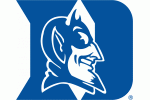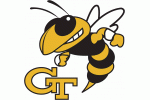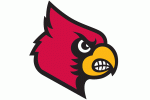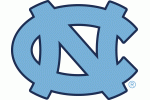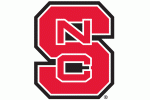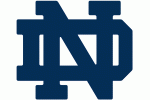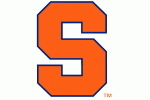The man, the myth, the legend WakeJake a.k.a. @BloggerSoDear himself came up with the idea, so send all thanks his direction and follow the man if you don't already. He pointed out that we're always talking about our opponents on this blog, but we could do a better job of going in-depth on the Deacs. He of course was absolutely correct, especially considering that the bulk of our audience are Wake Forest fans.
Before I go into the stats I just want to go over the four most important components of basketball. These are the four factors which statistician Dean Oliver determined to be the most important (in descending/weighted order) towards winning a basketball game.
- Effective Field Goal % (Weighted average that rewards 3 point shooting) (10)
- Turnover % (Turnovers/# of possessions) (5-6)
- Offensive/Defensive Rebounding% (Rebounds/Rebounding Opportunities) (4-5)
- Free Throw Rate (Free Throws attempted per Field Goal Attempted) (2-3)
We speak in terms of percentages so that we can adjust for pace of a play. Just because a team scores a lot of points per game does not necessarily make them a great offensive team. For example, Virginia Military Institute, whom Wake Forest defeated earlier this season, averages a whopping 89.5 points per game (2nd nationally). This may seem impressive, but we must also consider that they have the fifth most possession in the country (75.3 per game) and only average 1.04 points per possession (167th nationally). You will also hear, "well North Carolina doesn't play any defense." That statement simply isn't true. North Carolina is currently tied for 103rd nationally in points allowed per game, but when you adjust for pace, they are the 22nd most efficient defense in the country, only allowing 0.942 points per possession. So with that brief into to tempo-free statistics, let's jump right in!
Effective Field Goal %
In the simplest terms, a basketball game is won by the team who outscores its opponent, and this is typically done by the team who shoots the ball better. But we simply cannot look at pure field goal% as the 3 point field goal attempt is such a critical part of the game now. A player may "only" shoot 40% from beyond the arc, but that same player could shoot 60% from 2 point range and still produce the same amount of points (120) assuming 100 shots were taken from both locations. Because scoring is obviously so fundamental to basketball, effective field goal % is the biggest predictor of success.
Wake Forest allows 0.966 points per possession, which is 43rd nationally and 7th in the ACC. A large reason behind this is that they have only allowed opponents to have an effective field goal percentage of 44%. Wake's worst defensive performance on the season came when they allowed Tennessee to have an eFG% of 57.4% and their best performance of the year came against UNC Greensboro, when the Spartans had an eFG% of just 32.5%. I should point out that these numbers are unadjusted and do not reflect that Wake Forest has played one of the 20 easiest schedules in the country so far this season.
Offensively, Wake Forest scores 1.046 points per possession, which is 162nd nationally and 12th in the ACC. Again, a large reason for Wake's relatively average offense has been their so-so eFG% of 50.5%, which is 129th nationally. Wake's best performance of the season came against Tulane when the Deacs had an eFG% of 57.5% and their worst performance came against UNC Greensboro, when they had an eFG% of just 43.3%.
Turnover %
Turnovers are the second most important part of basketball and that fundamentally makes sense given its relation to eFG%. If a team turns it over, then they completely wasted a possession and don't even have an opportunity to score/improve their eFG%. Additionally, turnovers can also provide opposing teams fast break opportunities which can often provide field goal attempts that produce a very high expected value.
Wake Forest started the season with an incredible turnover percentage of just 6.6%, but this is a trend which has been going in the wrong direction for the Deacs. Over the past four games (Tulane, Richmond, St. Bonaventure, and UNCG) the Deacs have turned it over on at least 20% of their possessions, which is not winning basketball. Overall, Wake Forest still ranks 91st nationally in turnover percentage, but that ranking has been slipping for the past month.
The Deacs do not do a great job at forcing turnovers and therefore rank 277th nationally in turnover percentage defense. Our steal percentage is also 277th in the country and this has limited our ability to generate the fast break and has forced us into a slower game than we would like.
Rebounding %
Rebounding is the third most important component of winning basketball games, and it is just slightly below turnover percentage. Rebounds are essentially the opposite of turnovers in that they give your team additional opportunities and also limit your opponent's opportunities. The reason I believe they are slightly less important than turnovers is that typically turnovers come before any shot attempts and therefore you would have no chance for points on a possession, whereas on a rebound you or your opponent already had at least one shot attempt.
Rebounding is what this Wake Forest team actually does best. The Deacs grab 35.6% of offensive rebounding opportunities, which is 72nd nationally. A large reason for this is not only Devin Thomas' impressive numbers, but Arnaud William Adala Moto's and Andre Washington's very solid rebounding numbers in their limited minutes. Wake is the 14th best defensive rebounding team in the country. In addition to the three aforementioned players, Tyler Cavanaugh and Travis McKie do a very solid job on the defensive glass.
Wake's defensive rebounding has been very solid all year, however, three of their four worst performances on the defensive glass came in the Atlantis games, so this will be something to track as conference season starts. Offensive rebounding has also been fairly consistent throughout the year, but two of the three worst performances came in Atlantis, so offensive rebounding will be another thing to track as conference season progresses.
Free Throw Rate
It has been shown that getting to the foul line is a bigger predictor of success rather than the ability to make a higher percentage of fewer shots. With regard to actually getting to the line, Wake Forest is 58th nationally and have a free throw rate of 47.7%. That is, for every 100 field goal attempts, they have approximately 47-48 free throw attempts. On the flip side, the Deacs only allow their opponents to get to the foul line at a rate of 37.3%, which is 111th nationally.
Codi Miller-McIntyre, Devin Thomas and Tyler Cavanaugh are all very good at drawing fouls ( each averages more than 5 per 40 minutes played). Additionally, Codi Miller-McIntyre, Travis McKie and Coron Williams are all called for fewer than 2.4 fouls per 40 minutes played, which keeps them on the court and opponents off the foul line. Arnaud William Adala Moto and Andre Washington both average more than 7 fouls per 40 minutes, so that is something that should be addressed with regards to defensive fundamentals.
What is troublesome is that Wake Forest has made only 62.8% of their free throws, which is 321st nationally. I realize that free throw rate is more predictive than free throw percentage, but Wake Forest is expected to play a lot of close games this conference season in which the difference could very well be a free throw or two. I'll also point out that Wake Forest has been fortunate so far this season and that opponents have only been shooting 65.4% from the foul line, which is nearly 4 percentage points below the NCAA average.
Outlook
According to KenPom (which I highly recommend you all subscribe to), Wake Forest will be the favorite in just five of its remaining 19 contests. Our highest individual chance to win a game is our game against Boston College in which we have a 78% chance of winning. While that is somewhat strong, our expected outcome over those five games is just 3.18, so the most likely scenario is that we still go just 3-2 in our five easiest ACC games. There are also six contests which Wake has less than a 25% chance to win and has an expected outcome of 0.98 wins over that six game stretch. There are also eight games in which Wake has between a 30% and 45% chance of winning, with an expected outcome of 2.93 wins. Therefore, 7-11 is our most likely ACC record.
The 10-2 start has been nice of a program, which has won just 8, 13 and 13 games, respectively over the past three seasons, but it must be stressed that Wake has played one of the 20 easiest schedules in the country up to this point. While the ACC has not lived up to the hype as the "greatest conference ever," it has still been a very strong conference and has seven of KenPom's top 40 teams, including six in the top 26.
Overall, Wake Forest should be very competitive in two-thirds of our remaining contests. The real question mark is just how well will we perform in close games, in which the outcomes are largely dictated by luck. Houston Rockets general manager has the great saying of "Great teams don't win close games, they avoid them." Teams like Duke historically win close games at about the same rate that everyone else does, they just typically win games by a large enough margin where luck is far less influential on the outcome.
I hope this was informative in terms of strengths, weaknesses and trends of our team and players. I will continue providing tempo-free analysis throughout the season. I would love to hear your thoughts on this piece and if you have a question about trends of individual players or another statistic, I'd be happy to look to those and do my best to answer.





